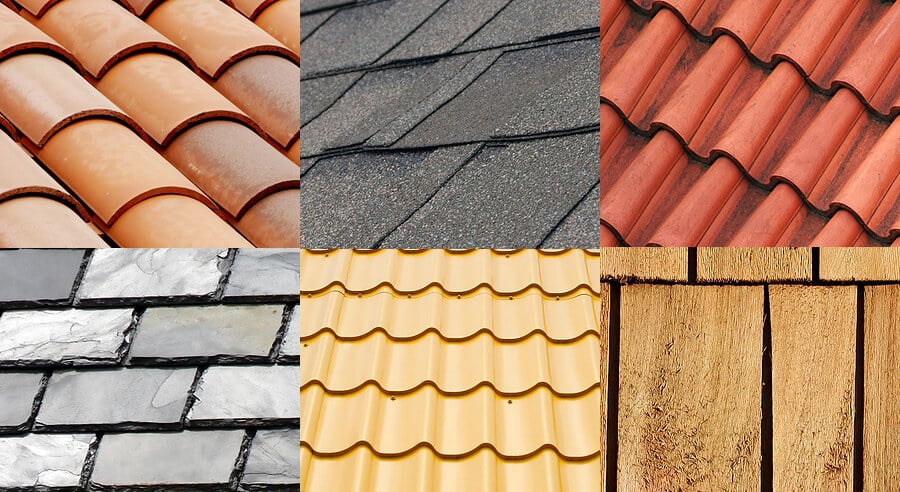When it comes to roofing, the material you choose plays a critical role in the overall performance, durability, and aesthetics of your home. Different roofing materials offer varying levels of protection, longevity, and style, making it essential to pick the one that fits your home’s specific needs and climate conditions. In this blog, we’ll explore the top 7 roofing materials and help you decide which is best for your home.
1. Asphalt Shingles: The Popular Choice
Advantages: Asphalt shingles are the most commonly used roofing material due to their affordability and ease of installation. They come in a wide range of colors and styles, making it easy to match your home’s aesthetic. Asphalt shingles are durable, resistant to fire, and perform well in various weather conditions, from rain to high winds.
Disadvantages: However, asphalt shingles have a shorter lifespan compared to some other roofing materials. They generally last around 20 to 30 years. While they offer great protection in many climates, extreme heat or dramatic temperature fluctuations can reduce their longevity.
Best For: Homeowners looking for an affordable, versatile, and easy-to-install option.
2. Metal Roofing: Durability and Energy Efficiency
Advantages: Metal roofing has gained popularity in recent years due to its longevity and energy-efficient properties. Metal roofs can last up to 50 years or more, depending on the type of metal used (e.g., aluminum, steel, copper). They are highly durable and can withstand harsh weather conditions, including high winds and heavy snowfall. Metal reflects sunlight, which can help reduce cooling costs during hot summers.
Disadvantages: The initial cost of metal roofing is higher compared to asphalt shingles. Additionally, metal roofs can be noisy during rainstorms, though this can be mitigated with proper insulation.
Best For: Homeowners in areas prone to extreme weather or those looking for an eco-friendly, long-lasting roofing solution.
3. Clay and Concrete Tiles: Timeless and Durable
Advantages: Clay and concrete tiles provide a classic look, often seen in Mediterranean, Spanish, or Southwestern-style homes. These tiles are incredibly durable and can last for 50 years or more. They are fire-resistant and perform well in hot climates, providing excellent insulation against the sun’s heat.
Disadvantages: Clay and concrete tiles are heavy, so your home’s structure must be able to support the weight. Additionally, these materials are more expensive to install compared to asphalt shingles or metal roofing. Tile roofs can also be fragile and may crack if walked on or struck by debris.
Best For: Homes in warm climates where aesthetics and longevity are key priorities.
4. Slate: Luxurious and Long-Lasting
Advantages: Slate is a natural stone material that offers a high-end, elegant look. Known for its unmatched durability, a slate roof can last over 100 years with proper maintenance. It’s also fire-resistant and environmentally friendly, as it is a natural material that requires minimal processing.
Disadvantages: Slate is one of the most expensive roofing materials, both in terms of material cost and installation. Like clay and concrete tiles, slate is heavy, requiring additional structural support. It’s also prone to cracking, so installation and repairs should only be handled by experienced professionals.
Best For: Homeowners looking for a premium, long-lasting roofing material with a traditional, upscale appearance.
5. Wood Shingles and Shakes: Natural Charm
Advantages: Wood shingles and shakes give homes a rustic, natural appearance that blends well with various architectural styles, especially cottages, cabins, and historical homes. Wood offers excellent insulation and can last up to 30 years with proper maintenance. Cedar and redwood are popular choices for their durability and resistance to insects and decay.
Disadvantages: Wood roofing materials require regular maintenance, including treatments to prevent mold, rot, and insect infestation. They are also not fire-resistant unless treated with a fire retardant. In areas with high humidity or frequent rain, wood shingles may not be the best choice as they can deteriorate faster.
Best For: Homeowners seeking a natural, eco-friendly aesthetic and are willing to invest time in regular maintenance.
6. Synthetic Roofing: The Modern Alternative
Advantages: Synthetic roofing materials, such as rubber, plastic, or polymer-based products, mimic the appearance of more expensive materials like slate or wood but at a fraction of the cost. They are lightweight, durable, and often come with long warranties. Synthetic roofs can be designed to offer enhanced resistance to extreme weather conditions, such as wind and hail.
Disadvantages: While synthetic materials can look like natural products, they may not have the same lifespan or aesthetic appeal. Quality can vary significantly between manufacturers, so it’s essential to choose a reputable brand. Over time, synthetic roofs may not age as gracefully as their natural counterparts.
Best For: Homeowners looking for a budget-friendly, low-maintenance alternative to natural materials.
7. Green Roofs: Eco-Friendly and Innovative
Advantages: Green roofs, also known as living roofs, involve planting vegetation on a waterproof layer atop your home. These roofs are an eco-friendly option that can improve air quality, reduce urban heat, and provide additional insulation. Green roofs can also help manage stormwater runoff and reduce energy costs.
Disadvantages: Green roofs require a higher level of maintenance than traditional roofing materials. You’ll need to regularly care for the plants and ensure proper drainage. Installation costs are higher due to the need for additional layers, such as waterproof membranes and root barriers. The structure of your home must also be strong enough to support the weight of the plants and soil.
Best For: Environmentally-conscious homeowners looking to reduce their carbon footprint and create a sustainable living space.
Conclusion: Which Roofing Material is Best for Your Home?
The best roofing material for your home depends on your budget, climate, aesthetic preferences, and how much maintenance you’re willing to invest. For most homeowners, asphalt shingles offer a reliable, cost-effective option, while those seeking longevity might lean toward metal, slate, or tile. If sustainability is a top priority, consider a green roof. Regardless of your choice, ensure that the material you select complements your home’s style and provides adequate protection from the elements for years to come.



